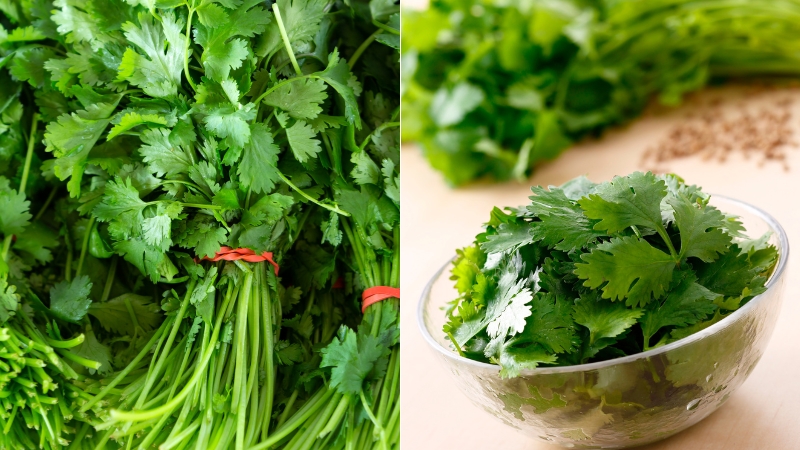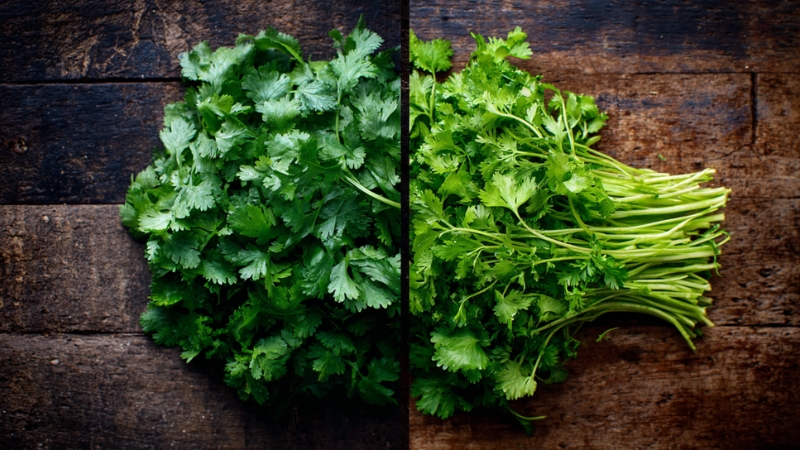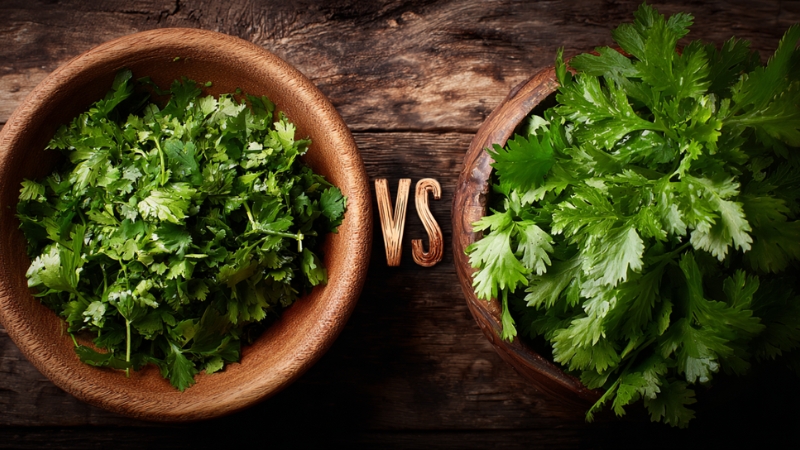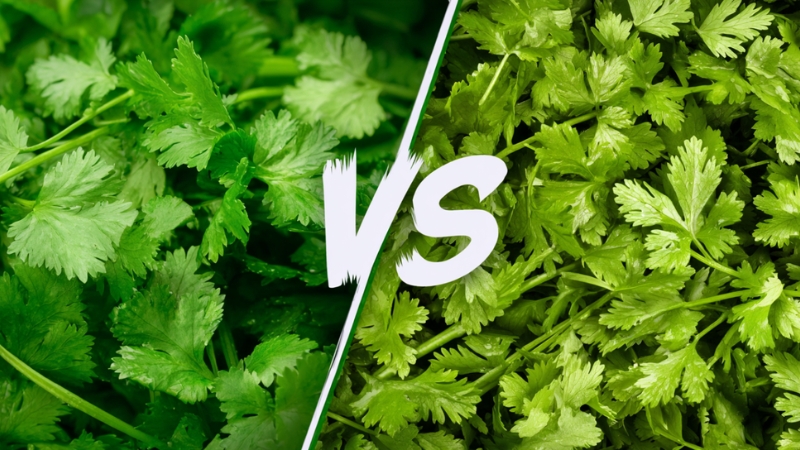Culantro vs Cilantro – 3 Ways They Differ, and How to Use Them
If you’ve ever mistaken culantro for cilantro, you’re far from alone. The two herbs share almost the same name, look similar at a glance, and even taste related, but they’re not the same plant.
The difference between culantro and cilantro goes deeper than spelling: they come from different botanical families, grow in different climates, and bring distinct flavor profiles to the kitchen.
In short, cilantro gives you a bright, citrusy top note, while culantro delivers a deeper, stronger, almost peppery punch.
Knowing which one to use can make or break your dish, especially if you cook Latin American, Caribbean, or Southeast Asian food.
1. Appearance and Growing Conditions

At first glance, culantro and cilantro might seem like cousins, but in reality, they come from entirely different plant families.
Feature
Cilantro (Coriandrum sativum)
Culantro (Eryngium foetidum)
Botanical Family
Apiaceae (carrot family)
Apiaceae (same family, but different genus)
Leaf Shape
Soft, frilly, flat leaves similar to parsley
Long, serrated, thick leaves resembling sawtooth lettuce
Growth Habit
Cool-weather annual herb
Heat-loving perennial
Preferred Climate
Temperate or cool climates
Tropical and humid regions
Common Regions
Mexico, Mediterranean, North America
Caribbean, Central America, Southeast Asia
Cilantro is delicate; te, it thrives in cooler weather and bolts quickly when temperatures rise. It grows best in spring or fall gardens and loses its flavor as soon as it flowers.
Culantro, on the other hand, thrives in heat. You’ll find it growing wild in humid Caribbean forests or Southeast Asian markets under names like ngo gai (Vietnamese), chadon beni (Trinidad), or recao (Puerto Rico).
If you tried growing cilantro in the Caribbean, it would wither fast. But culantro, with its thick, leathery leaves, would flourish. That resilience also explains its stronger aroma; the plant develops more essential oils to protect itself in hot conditions, which intensifies its flavor.
2. Flavor and Culinary Use

This is where most cooks notice the real difference. While both herbs share that signature coriandrum-like scent, culantro’s taste is much stronger, roughly 10 times more pungent than cilantro.
Characteristic
Cilantro
Culantro
Flavor
Fresh, citrusy, bright
Deep, musky, peppery, with hints of oregano
Aroma Strength
Light to medium
Very strong
Best Used
Fresh, as a garnish or topping
Cooked, blended, or simmered in sauces and soups
Common Dishes
Mexican salsa, guacamole, Indian chutneys, Thai salads
Puerto Rican sofrito, Vietnamese pho, Caribbean stews, Panamanian soups
Cilantro is best when raw or added at the last moment; it wilts quickly and loses its fragrance when cooked. You’ll see it sprinkled over tacos, curries, or noodle soups to give that final burst of freshness.
Culantro, by contrast, stands up beautifully to heat. Its tough leaves mellow during cooking and add a deep herbal backbone to dishes.
In Puerto Rico, recao is one of the key ingredients in sofrito, the aromatic base for countless stews and beans. In Vietnam, ngo gai leaves often float alongside cilantro in bowls of pho, giving a savory depth that balances the broth’s richness.
If you ever substitute culantro for cilantro, use far less, usually one leaf of culantro for a small handful of cilantro. Otherwise, the flavor will overpower your dish.
3. Availability and Substitution Tips
Cilantro is globally mainstream; culantro remains regional. You’ll find cilantro in nearly every supermarket, but culantro typically appears only in Latin American or Asian grocery stores.
Availability
Cilantro
Culantro
Grocery Store Access
Widely available
Specialty or ethnic stores
Price
Inexpensive
Often higher, depending on freshness
Shelf Life
3–5 days refrigerated
Up to 2 weeks in a damp paper towel
Substitutes
Parsley (for color, not flavor)
Cilantro (in larger amounts)
Because culantro’s flavor is much stronger, it works as a substitute for cilantro when cooked, but not the other way around. If you use cilantro in place of culantro, expect a lighter, more delicate taste.
A few substitution guidelines:
- For raw dishes like salsa or salads: stick with cilantro.
- For stews, soups, or marinades: culantro adds depth and holds up better under heat.
- If you can’t find culantro, a mix of cilantro and a touch of oregano or epazote can mimic its intensity.
How to Use Each in Your Kitchen

Cilantro – Best Uses
- Fresh garnish for tacos, soups, or rice bowls
- Blended into chutneys, salsa verde, or pesto-style sauces
- Added to smoothies or cold noodles for brightness
Culantro – Best Uses
- Base flavor for sofrito, arroz con gandules, or Caribbean pepper sauces
- Chopped into marinades for meats or seafood
- Simmered in soups like sancocho, pho, or Caribbean callaloo
Culantro can also be made into an herbal paste: blend a few leaves with garlic, onion, olive oil, and salt. This mixture can be frozen in cubes and added to stews for an instant hit of flavor.
Cilantro doesn’t handle freezing as well; it tends to lose its fragrance, but it shines when added fresh to balance acidity or spice.
Final Thoughts
@judybaogarden Did you know the difference between CILANTRO and CULANTRO? #cilantro #culantro #herbs #gardening #garden #fresh ♬ Stories 2 – Danilo Stankovic
Culantro and cilantro may look and sound similar, but they play very different roles in the kitchen. Cilantro offers freshness, while culantro adds depth. Cilantro works best uncooked; culantro shines in simmering dishes.
If you cook often with Latin American or Asian ingredients, learning how to use both herbs can transform your food. Use cilantro when you want light, bright, herbal notes, and culantro when you want bold, cooked-in flavor that lingers on the palate.
A good example is a vegan ramen with turmeric tofu & indian herbs, where cilantro lifts the broth at the end, while culantro builds the base flavor during simmering.
In short:
- Cilantro is the sparkle.
- Culantro is the backbone.
Knowing the difference lets you use them intentionally, not interchangeably. And that’s what separates a good home cook from a great one.

